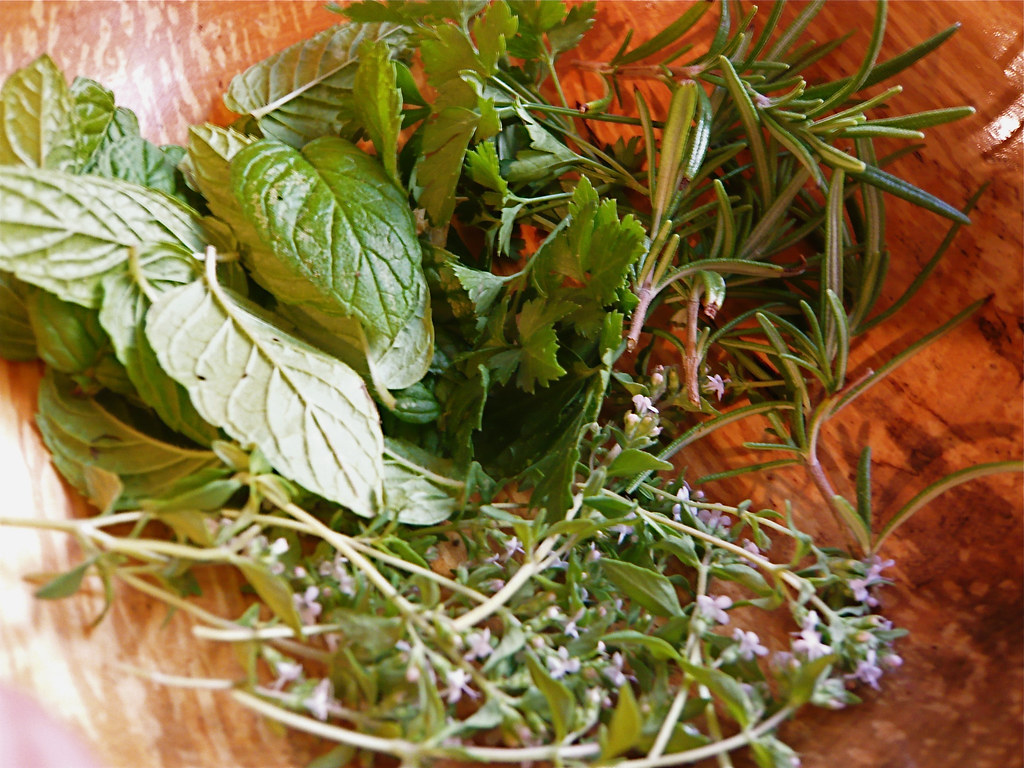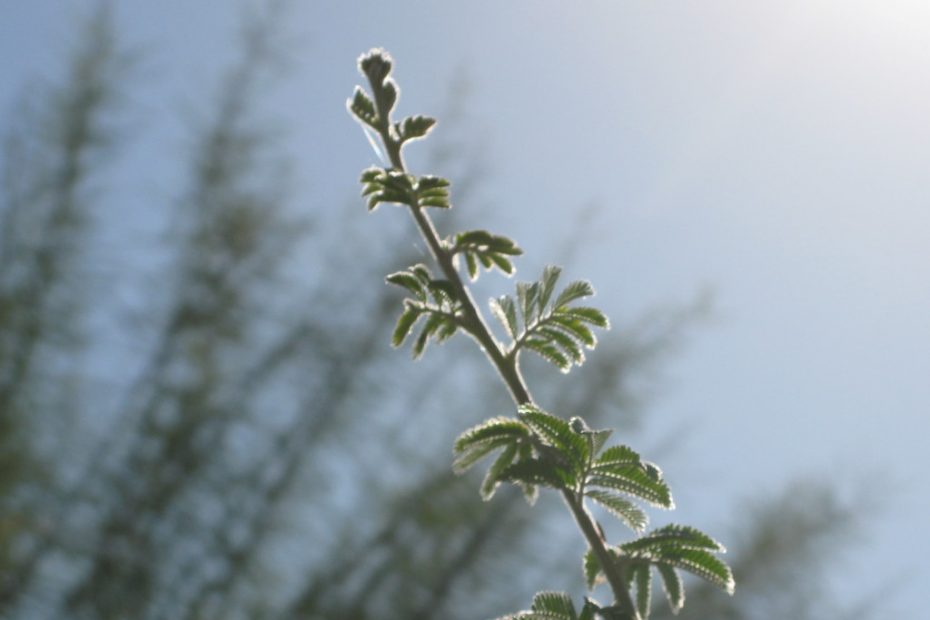As the winter months start rolling around and temperatures start to drop preparing your outdoor herbs for winter becomes more and more important. While I usually cut my herbs whenever I use them I didn’t know how to cut herbs for winter. Should herbs be cut back for winter?
Perennial herbs such as oregano, thyme, and rosemary should be cut back for winter in fall, a few weeks before the first frost. Annual herbs like basil, cilantro, and dill, can be harvested entirely as they will not survive winters outdoors.
Let’s look at all this in a bit more detail! We’ll go over what herbs to cut back for winter, when to cut them back and how exactly to do so. I’ll also go over the differences between annual and perennial herbs or hard and soft herbs with regards to cutting them back in fall.
What herbs should be cut back for winter?
Only perennial herbs need to be cut back for winter. These herbs have lifecycles of multiple years and can survive winters and light frost. On the other hand, annual herbs do not need to be cut back. They will sow their seeds in fall and can be cut down entirely in winter as they will not survive the cold.
Cutting back perennial herbs
Perennial herbs are those that have a lifecycle of multiple years and can regrow indefinitely given the right conditions. Cutting back these kinds of herbs is crucial to give them the best chance of surviving frost.

Perennial herbs that should be cut back for winter include:
- Oregano
- Thyme
- Rosemary
- Mint
- Fennel
- Lavender
- Tarragon
Cutting back annual herbs
Annual herbs do not need to be cut back for winter but should be cut down entirely. These herbal plants are only meant to last for one season after which they sow their seeds in the ground for next year. Instead of cutting back annual herbs you can harvest them and dry their leaves for the winter months.
Annual herbs that should not be cut back for winter include:
- Basil
- Cilantro
- Stevia
- Dill
In addition to distinguishing between perennial and annual herbs when cutting them for winter, it can be helpful to think of these plants in terms of hard and soft herbs. Hard herbs like thyme and rosemary have a woody stem that protects the plant from the cold. Soft herbs such as basil have tender leaves and stems.
Now that we know to cut back our perennial herbs, let’s figure out when to cut them back. There are several methods you can use to determine the best date for cutting back herbs but I’ll just share the most common approach here.
When should herbs be cut back?
Perennial herbs should be cut back a couple of weeks before the first frost. This will give the plant enough time to recover from the cutting and harden its stems for winter. Annual herbs can be left outside until the first frost and should then be cut entirely.
While this sounds like a good plan in theory, knowing when the first frost is going to hit is not always easy. You’ll probably have a rough idea but better to be safe than sorry. Cutting perennial herbs to close to the frost date will leave the plant exposed and more likely to not survive winter.
Luckily, there is a simple method for finding out exactly when to cut back your herbs for winter. First, find out your hardiness zones on the USDA’s Hardiness Zone Map. Then check for the average first frost date in your zone:

| Zone | Last Frost Date | First Frost Date |
| 1 | May 22 – June 4 | August 25-31 |
| 2 | May 15-22 | September 1-8 |
| 3 | May 1-16 | September 8-15 |
| 4 | April 24 – May 12 | September 21 – October 7 |
| 5 | April 7-30 | October 13 – October 21 |
| 6 | April 1-21 | October 17-31 |
| 7 | March 22 – April 3 | October 29 – November 15 |
| 8 | March 13-28 | November 7-28 |
| 9 | February 6-28 | November 25 – December 13 |
| 10-13 | No freeze | No freeze |
Now, it’s as simple as finding your zone in the table above and the corresponding first frost date. Once you’ve got the date simply go back 2-3 weeks and you have got the perfect time to cut back your herbs for winter.
For instance, let’s say you live in Ohio. According to the USDA you are in zone 6. The first frost date for zone 6 is October 17-31. If we calculate back 2-3 weeks we find that the best time to cut back herbs in Ohio will be late September/early October.
Using this approach I’ve come up with the table below which you can use as a reference for when to cut back perennial herbs:
| USDA Hardiness Zone | When to cut back herbs |
| 1 | August 15th |
| 2 | August 15th |
| 3 | September 1st |
| 4 | September 15th |
| 5 | October 1st |
| 6 | October 1st |
| 7 | October 15th |
| 8 | November 1st |
| 9 | November 15th |
| 10-13 | Never |
However, when it comes to annual herbs, the process is much simpler. I cut my annual herbs whenever I would like to use them in cooking, ideally before the start to flower.

In fall and winter, you can simply cut down the entire plant once the first frost hits. Make sure to do this soon after as the plant will otherwise die and with it all its savory leaves.
When cutting back annual herbs you cut them down at the stems and cover them remaining stem with soil. This will protect any seeds that have been sown by the decaying plant and will give them a better chance of making it through the cold and sprouting again in spring.
Should herbs be cut back in the fall?
Most perennial herbs should be cut back in fall, depending on the hardiness zones you live in. Fall in the northern hemisphere officially begins on September 22 and ends on December 21. If you live in zone 1-4 you will need to cut back your herbs before fall, in late summer.
Generally, however, it’s more important to look at your current climate conditions than at specific dates. If the air starts getting cold and icy, it’s probably time to cut back your herbs whether it is officially fall or not.
Now that we have examined when exactly to cut back herbs I still have not told you how to actually do it. So, here are my best practices for cutting back herbs for winter.
How to cut back herbs for winter
When cutting back herb – or any plants for that matter – always use a clean and sharp cutting device. Remove dead flower heads and leaves and don’t cut the herb down too low. If you’d like to propagate your plants simply cut the stem around the nodes.
Here’s how to cut back herbs for winter:
- Use sharp & clean cutters: Making sure your garden shears are clean and sharp will avoid damaging the delicate herbs when cutting. Blunt scissors can tear off plant parts or cause damage to the stem. This will make the herb more vulnerable to the cold.
- Remove dead flower heads: Dead flower heads and leaves consume energy. Removing those will help the plant direct its nutrients where they are needed. Much like our human bodies supply the most core and vital organs first when faced with cold, so does an herb’s organism.
- Don’t cut too low: Cutting herbs too low down the stem will make it harder for the plant to recover from the cutting. If you do decide to cut lower than usual give the herb plenty of time to grow strong again before the first frost. Generally, a quarter-inch above the leaf buds is a good place to cut.
- Cut the stem with nodes: When cutting your annual herbs make sure to preserve parts of the stem that have leaf nodes attached. If taken care of properly inside you will soon have soft herbs growing voluptuously.
Conclusion
Cutting back herbs for winter is not hard to do! All you need to know is when and how to do it. I hope this article helped you figure both of these things out. Remember the difference between perennial and annual herbs and cut back correspondingly.
I’ve always managed to keep most of my perennial herbs alive in milder winters when cutting them back early enough in fall. My annual herbs also grow back easily indoors. Happy cutting 😀
“In Arizona they cut me” by kevin dooley is licensed under CC BY 2.0; “365.184: Garden herbs” by WordRidden is licensed under CC BY 2.0; “Solanum americanum” by D.Eickhoff is licensed under CC BY 2.0
- Are Herbs Perennial? - January 29, 2021
- Can Herbs Survive Winter? - January 28, 2021
- Can Dogs Eat Herbs? - January 27, 2021
